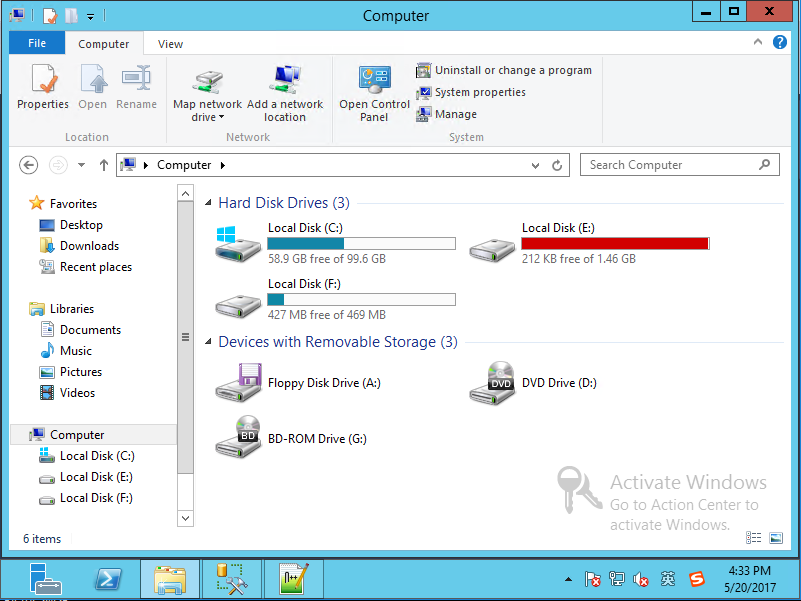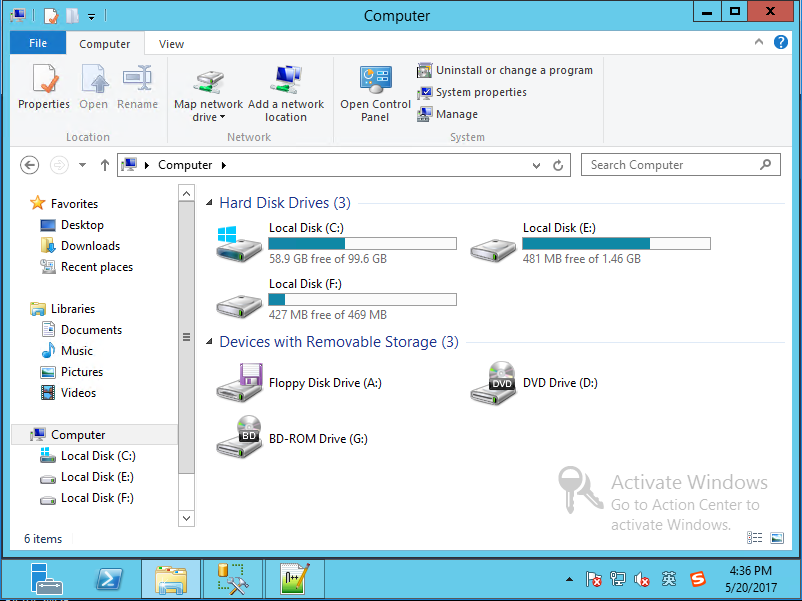This paper introduces a simple SQL script to shrink the size of all non-system DB files in the whole Microsoft SQL Server instance.
As a program ape dealing with SQL every day, it often encounters the situation that DB files are too big and space is full:

For developers and testers, if DB data is not particularly important, they will not intentionally expand disk space, but directly use the Shrink File function of SQL to reduce the size of DB files. For more details, see: https://docs.microsoft.com/en-us/sql/relational-databases/databases/shrink-a-file.
Here's a script that supports one-click shrinkage of all non-system DB file sizes across the entire SQL Server instance.
The script support functions and related logic are as follows:
- Five systems DB (master, model, msdb, tempdb, Resource) do not perform Shrink File operations.
- If DB's Recovery Model is FULL or BULK_LOGGED, it will automatically change to SIMPLE and Shrink File will change back to the original after operation.
- Only Shrink File operations are performed on DB with ONLINE status.
- All files of DB, including data files and log files, will be contracted.
- Users executing SQL scripts need DBO privileges for sysadmin or related databases.
The script is as follows:
1 -- Created by Bob from http://www.cnblogs.com/lavender000/ 2 use master 3 DECLARE dbCursor CURSOR for select name from [master].[sys].[databases] where state = 0 and is_in_standby = 0; 4 DECLARE @dbname NVARCHAR(255) 5 DECLARE @recoveryModel NVARCHAR(255) 6 DECLARE @tempTSQL NVARCHAR(255) 7 DECLARE @dbFilesCursor CURSOR 8 DECLARE @dbFile NVARCHAR(255) 9 DECLARE @flag BIT 10 11 OPEN dbCursor 12 FETCH NEXT FROM dbCursor INTO @dbname 13 14 WHILE @@FETCH_STATUS = 0 15 BEGIN 16 if((@dbname <> 'master') and (@dbname <> 'model') and (@dbname <> 'msdb') and (@dbname <> 'tempdb') and (@dbname <> 'Resource')) 17 begin 18 print('') 19 print('Database [' + @dbname + '] will be shrinked log...') 20 SET @flag = 1 21 SET @recoveryModel = (SELECT recovery_model_desc FROM sys.databases WHERE name = @dbname) 22 if((@recoveryModel = 'FULL') or (@recoveryModel = 'BULK_LOGGED')) 23 begin 24 SET @tempTSQL = (select CONCAT('ALTER DATABASE [', @dbname, '] SET RECOVERY SIMPLE with no_wait')) 25 EXEC sp_executesql @tempTSQL 26 if (@@ERROR = 0) 27 begin 28 print(' Database [' + @dbname + '] recovery model has been changed to ''SIMPLE''.') 29 SET @flag = 1 30 end 31 else 32 begin 33 print('Database [' + @dbname + '] recovery model failed to be changed to ''SIMPLE''.') 34 SET @flag = 0 35 end 36 end 37 38 if(@flag = 1) 39 begin 40 SET @tempTSQL = (select CONCAT('use [', @dbname, ']')) 41 EXEC sp_executesql @tempTSQL 42 SET @dbFilesCursor = CURSOR for select sys.master_files.name from sys.master_files, [master].[sys].[databases] where databases.name = @dbname and databases.database_id = sys.master_files.database_id 43 open @dbFilesCursor 44 FETCH NEXT FROM @dbFilesCursor INTO @dbFile 45 WHILE @@FETCH_STATUS = 0 46 BEGIN 47 SET @tempTSQL = (select CONCAT('use [', @dbname, '] DBCC SHRINKFILE (N''', @dbFile, ''') with NO_INFOMSGS')) 48 EXEC sp_executesql @tempTSQL 49 if(@@ERROR = 0) print(' Database file [' + @dbFile + '] has been shrinked log successfully.') 50 FETCH NEXT FROM @dbFilesCursor INTO @dbFile 51 END 52 CLOSE @dbFilesCursor 53 DEALLOCATE @dbFilesCursor 54 55 if(@recoveryModel <> 'SIMPLE') 56 begin 57 -- Finally changed back 58 SET @tempTSQL = (select CONCAT('ALTER DATABASE [', @dbname, '] SET RECOVERY ', @recoveryModel, ' with no_wait')) 59 EXEC sp_executesql @tempTSQL 60 if (@@ERROR = 0) 61 begin 62 print(' Database [' + @dbname + '] recovery model has been changed back to ''' + @recoveryModel + '''') 63 end 64 else 65 begin 66 print(' Database [' + @dbname + '] recovery model failed to be changed back to ''' + @recoveryModel + '''') 67 end 68 end 69 end 70 end 71 FETCH NEXT FROM dbCursor INTO @dbname 72 END 73 74 CLOSE dbCursor 75 DEALLOCATE dbCursor
The results are as follows:


Note:
- If you are not at ease, you can backup the relevant database in advance.
- Before using, please read the script support function and related logic carefully. If it does not meet your own needs, please do not use the script, or modify the script according to your own needs.
- The script is a simple script, only for testing and learning, there may be BUG, can not be used in production environment, if there are errors, please leave a message.
[Original articles, reprinted please indicate the source, only for learning and research purposes, if there are errors, please leave a message, thank you for your support]
[Original site: http://www.cnblogs.com/lavender000/p/6882741.html From Forever smoked]